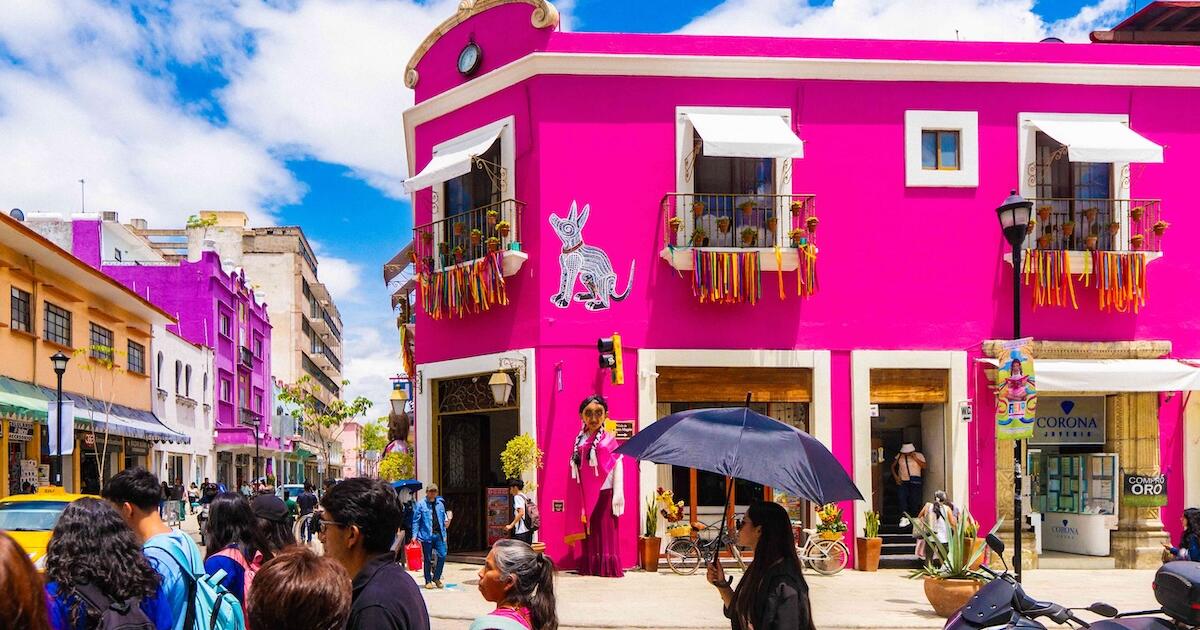Copyright Los Angeles Times

The moment you step foot into Oaxaca de Juárez, your senses are heightened. From the smell of the busy motorways coming from the airport, to the heightened chaos of the world around you. Then suddenly a colorful world comes alive – deep blues; purples; reds – even the yellows all pop. All the while, eyes feast on typography, shapes and architecture. After the fall of Tenochtitlan (now Mexico City) in 1521, the Spanish set out to conquer Oaxaca due to its rich gold deposits. What came from that was the immense growth of a Spanish-style city. However, the richness of the Oaxacan culture permeated, reclaimed and found an oasis in lands that were truly Mexican. Renowned for its tlayudas, traditional chapulines (Grasshoppers) and maguey worms, Oaxaca dares to try something transformative, with one’s palate. Out of this comes respect for one’s surroundings and the courage to take a leap of faith in a foreign land. There is something alive about Oaxaca. Something real. You begin to wonder if you are in Europe or in the Americas. Suddenly you’re thrown into the bustle, the noise, the scenography. From street merchants to the markets, it all feels homemade: touched by hands of artisans continuing their rooted cultures for centuries. Perhaps you enter a local Mezcalería, experiencing a distilling tradition that has permeated local bars and restaurants in Southern California and the U.S. Or maybe you meet Lorena Rubio with Oaxaca Eats Food Tours, a local who helps guide visitors navigating the markets, the restaurants, and the bars. Beginning your breakfast in Mercado Orgánico, an establishment with local vendors from Choccolatte, juice, as well as tortillas: All local top-of-the-line Oaxacan visionaries. Then you move to Mercado de 20 Noviembre, where locals promise you meals your palates have never encountered. If you’re a vegetarian, it could be intimidating – but with Lorena’s knowledge you can find solace. But, if you’re a carnivore, any table anywhere is yours. From tasting the markets to the street food, Lorena brings you to one of her favorite spots in Oaxaca: Casa Tavinche. Here’s the 411 on where to Eat in Oaxaca: Tierra del Sol Pitiona Cocina de Autor Casa Tavinche La Cosencha Mercado Organico El Escapilario Tacos del Carmen La Olla Oaxaca Alfonsina Then you find yourself back at your bed & breakfast, Grana. Grana feels like home, from the staff to the kitchen. You feel an overwhelming sense of support and discovery, from local insights to an immaculate breakfast. There’s deep Oaxacan culture steeped into Grana, from their wall of cactus (the namesake Grana coming from the insect that grows on the Cactus), to how the color from the succulent reflects throughout the B&B. This isn’t just a hotel, this was a celebration of the Oaxacan spirit. From mornings with chocolate to inviting yoga on the rooftop, Grana invites those visiting from anywhere to escape into the lifestyle, the artisanry and the culture of Oaxaca. When your taxi rolls in, you’ll depart with a lunch packed by Grana to send you back to the airport, back to Los Angeles – you wonder what parts of your palate have evolved on the visit. From the congested motorways to the security checkpoint … You’ll leave forever changed.



